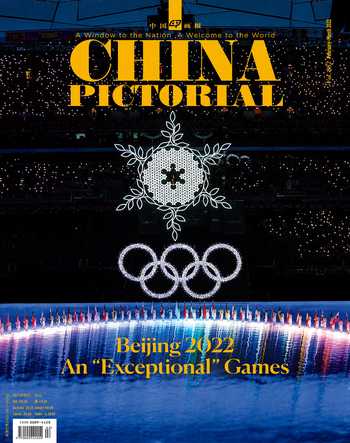A Long Century of Chinese Sports
by Wang Shuya
China has a long history of sports culture. Various entertainment events and military training competitions featuring sports such as dancing and archery were documented in China even before the Xia Dynasty (2100-1600 B.C.). Over time, people developed polo,“ancient Chinese football” known as cuju, martial arts, and qigong(a mind-body exercise form), all important disciplines of traditional Chinese sports.
Chinese sports have a unique cultural philosophy, stressing improvement of both physical and mental health.
Around the turn of the 20th century, introduction of Western culture helped modern competitive sports start to take roots in China. Many organically emerged from scratch and developed from weak to strong.
The book Sports Illustrated—China’s Racing in a Century employs many vivid images, detailed historical materials, and real stories to trace the unforgettable moments in the lengthy modernization process of Chinese sports. Accompanying the rich pictures is a strong sense of history, enabling readers to gain a clear insight into the development path of Chinese sports over the past century.
A chronicle of China’s pursuits of Olympic dreams, the book captures the twists, bumps, and struggles the Chinese people encountered along the road as well as the passion they showed, and shares the stories of China interacting and communicating with the world inside and outside the sports arena.
At the 1932 Los Angeles Olympic Games, 23-year-old sprinter Liu Changchun became the first and only Chinese athlete to compete in the Memorial Coliseum. In those days, China was so weak and poor that it could barely afford to cover his trip. However, the young man had endured unimaginable hardship and made the first step on behalf of his country to participate in the Olympic Games. This was an early glimpse of the firm resolution and strong will of the nation to catch up with global forerunners in sports. Since the founding of the People’s Republic of China in 1949, the country’s sports circles have always advocated “friendship first, competition second” and considered sports a messenger to spread peace and friendship with other countries and a bridge to promote human coexistence and sharing. In the 1970s, Ping-Pong Diplomacy was a pristine example of China’s philosophy towards international sports exchange. Analysts around the world agreed that the tiny ball turned the big globe because everything started with a friendly act.
Since the launch of reform and opening up in 1978, especially after the resumption of China’s lawful status in the International Olympic Committee (IOC) in 1979, the country’s return to the Olympic family and more active participation in international sports affairs enabled Chinese sports to finally start developing in tandem with the international track.
More than a half century after Liu Changchun’s participation in the Olympic Games in Los Angeles, Chinese sharpshooter Xu Haifeng won the country’s first Olympic gold medal, which not only changed Chinese Olympic history, but also kickstarted the promotion and spread of the Olympic spirit among more than a billion people.
At the awards ceremony, when then-IOC President Juan Antonio Samaranch presented the gold medal to China’s first Olympic champion, he emotionally declared it a big day in China’s sports history and said he was honored to award the gold to a Chinese athlete.

